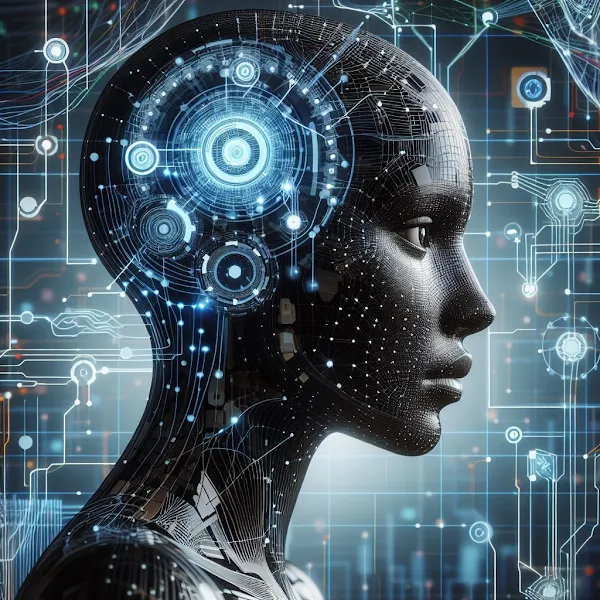Search This Blog
Sadika Media: Your Tech Knowledge Hub Empower yourself with tech insights, tutorials, guides, and courses for all levels. Stay ahead in the ever-evolving tech world with Sadika Media.
Featured post
- Get link
- X
- Other Apps
Supervised Learning: Demystifying the Art of Teaching Machines
Supervised Learning: Demystifying the Art of Teaching Machines
Imagine you're training a puppy. You show it a ball and say "fetch," rewarding it with a treat when it retrieves the ball correctly. Over time, the puppy learns to associate the word "fetch" with the action of getting the ball. This is a simple example of supervised learning, a fundamental concept in machine learning (ML) that allows us to train computers to perform specific tasks.
Supervised Learning: The Teacher-Student Analogy
In supervised learning, we act as teachers, providing machines (students) with labeled data. This data consists of **inputs** (the ball) and **desired outputs** (fetch). The machine analyzes these examples, learning the patterns and relationships between the inputs and outputs. Once trained, the machine can then make predictions for new, unseen data.
Let's break it down further:
- **Labeled Data:** The key ingredient for supervised learning is labeled data. Each data point has an **input** (features or attributes) and a corresponding **output** (label). For instance, an email spam filter might be trained on a dataset where each email is labeled as "spam" or "not spam."
- **Training the Model:** The labeled data is fed into a machine learning model, which acts like our student. The model analyzes the data, identifying patterns and relationships between the inputs and outputs. Imagine the puppy recognizing the ball and the word "fetch" as connected.
- **Making Predictions:** Once trained, the model can be used to predict the output for new, unseen data. Going back to our email example, the spam filter can now analyze a new email and classify it as spam or not spam based on the patterns it learned from the training data.
Common Supervised Learning Algorithms
There are various supervised learning algorithms, each with its strengths and applications. Here are a few popular ones:
- **Linear Regression:** Predicts a continuous output based on a linear relationship between the input features. (Imagine predicting house prices based on size and location.)
- **Logistic Regression:** Classifies data into two categories (like spam/not spam or cat/dog).
- **Decision Trees:** Create tree-like structures where the model asks a series of questions about the input data to arrive at a decision (like a flowchart to identify if someone is eligible for a loan).
- **Support Vector Machines (SVMs):** Create boundaries to separate data points belonging to different categories (useful for image classification).
Supervised Learning in Action
Supervised learning powers a wide range of applications that touch our daily lives:
- **Recommender Systems:** Suggesting products or movies you might like on online platforms.
- **Fraud Detection:** Identifying suspicious transactions on credit cards or bank accounts.
- **Medical Diagnosis:** Assisting doctors in analyzing medical images or predicting disease risk factors.
- **Self-Driving Cars:** Recognizing objects and making decisions while navigating roads.
The Future of Supervised Learning
As data continues to grow exponentially, supervised learning will play an even greater role in shaping the future. Advancements in areas like artificial neural networks and deep learning are pushing the boundaries of what supervised learning can achieve. However, challenges like ensuring data quality, addressing bias, and interpreting model decisions remain areas of ongoing research.
**Supervised learning is a powerful tool that allows us to teach machines to perform complex tasks.** By understanding its core concepts and applications, you'll gain a deeper appreciation for the world of machine learning and its impact on our lives.
- Get link
- X
- Other Apps
Popular Posts
AI-Powered Fraud Detection How to Protect Your Business
- Get link
- X
- Other Apps
AI-Powered Image Recognition: Applications in the Real World
- Get link
- X
- Other Apps

Comments
Post a Comment